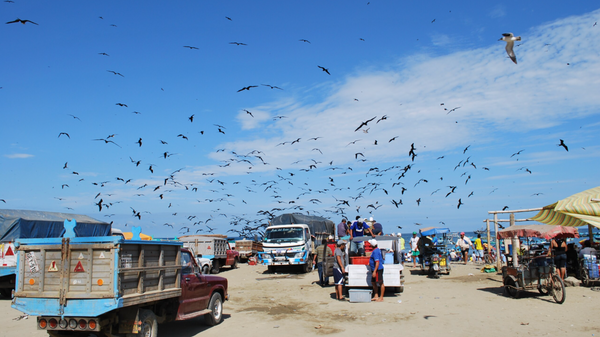
The steep way up the former incline railway, on the north side of Kit Hill, is edged with yellow gorse, stunted trees and lumps of granite, shrouded in emerald moss and polypody ferns. Near the top of the hill, which dominates the valley, discarded blocks lie where they have been tipped downslope.
The derelict quarry closed in 1955 after providing finished granite for parapets, embankments, lighthouses and monuments. At its busiest, between the two world wars, almost 100 men worked there, blasting, cutting, shaping, polishing and loading up stones for lowering towards the junction with the single track railway, which then curved towards Gunnislake and the viaduct at Calstock to link with the upcountry network. Granite ledges, crevices and wet hollows now host lichens, mosses, ferns, cotoneaster shrubs and willow, with pondweed in the standing water.
On this gloomy Sunday, two hardy swimmers emerge from the deep, black water below the sheer quarry face – 20 minutes immersion in a temperature of 6C (according to the swimmers). Other visitors to this popular country park walk briskly with their dogs, or more slowly with children, following signed tracks or standing a while, peering at the expanse of dingy landscape across the Inny Valley and into Devon, on the other side of the meandering Tamar. Patches of wan brightness shine out, briefly lighting new houses on the edge of distant Launceston, and emphasising the unseasonally lush greens of nearer stock-free pastures on the Duchy College farm.
Narrow paths, strewn with rotting oak leaves, lead down the sheltered side of the hill, wending across wet and uneven ground where turf, brambles, whortleberry and swathes of brown bracken disguise the splitting pits where moorstone was broken up by hand, and early stream-works for tin ore. A jumble of overgrown clitter (rough stone) helps to protect the maturing woodland of thorn, oak, ash, rowan and holly; perhaps cuckoos and warblers will return in the spring.
On the edge of the open land, beside the former track bed of the railway that terminated at Kelly Bray, the elusive sun reappears, peeping above the summit of the shadowy hillside, once the workplace of miners and quarry workers.
• Country Diary is on Twitter at @gdncountrydiary







